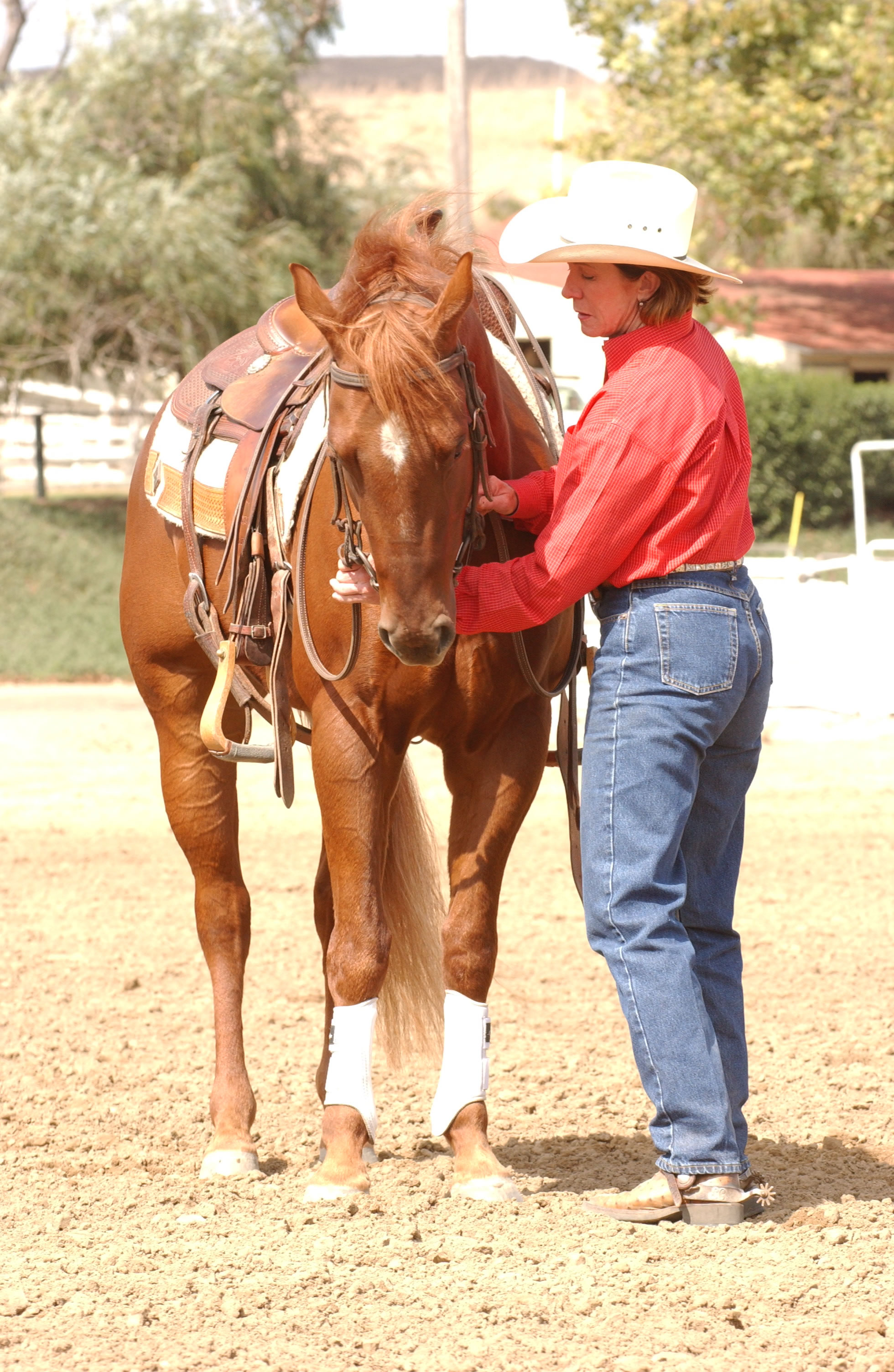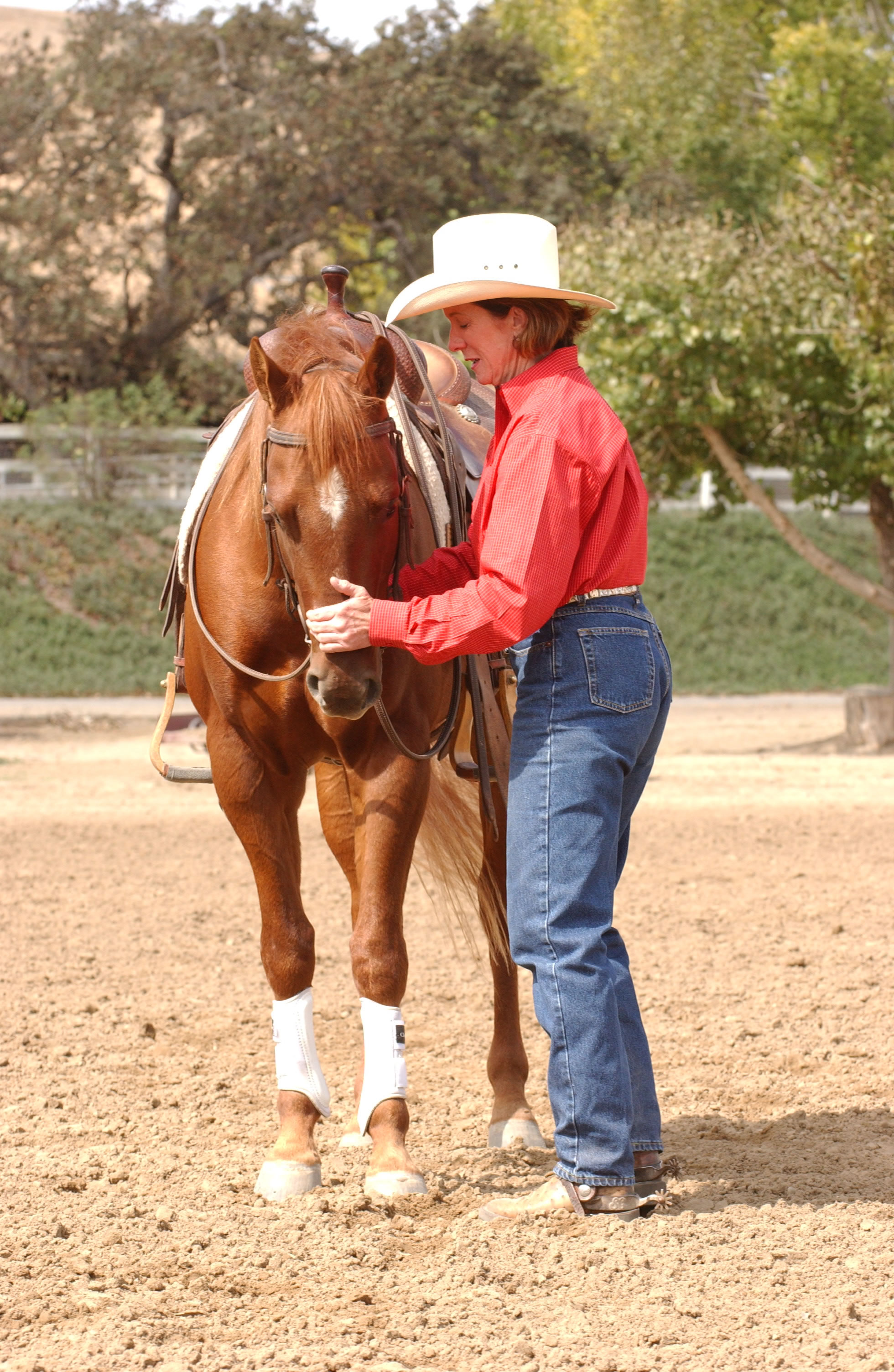Backing up is important because it’s not only a maneuver in itself but also the correction for a poor stop.
At this point, however, backing doesn’t mean the same as it will later on (when we’ll want it super-straight, very fast, and in response to few visible cues).
For now, we just want to introduce the concept clearly, calmly, and patiently. The worst thing you can do at this point is to try to go faster and sacrifice correctness and softness.
Because so many of you are working with green horses, I want to go over how I start one backing from the ground.
The goal. Your horse will maintain a soft face (that is, no bracing against the bit) as he takes a few willing steps backward, reasonably straight.

Here’s how: from the ground. With your horse in a snaffle bit and saddle, stand facing him, just off to one side so you’re not directly in front. Grasp a rein just behind the bit with each hand, and apply gentle backward pressure as you did to ask him to bring his nose back and down in the face-softening exercise. If necessary, slide the bit gently from side to side while maintaining soft pressure on both reins.
When he responds by dropping his nose down and back, don’t release the pressure as you did for face softening. Instead, maintain a gentle, intermittent pressure and cluck. If he hesitates, be patient. It’s better to wait him out (he’ll give in eventually) than to start applying more and more pressure. Most horses are willing to do this for us if we’re patient and ask for just a step or two at a time in the beginning. If he still won’t step back, apply pressure over his lower face (where the hackamore would rest)to encourage him to unstick his feet.


Your point of view caught my eye and was very interesting. Thanks. I have a question for you. https://accounts.binance.com/ur/register?ref=WTOZ531Y
Your point of view caught my eye and was very interesting. Thanks. I have a question for you.
Your article helped me a lot, is there any more related content? Thanks!
Since it’s the release of pressure that teaches the added voice cues may have no purpose as the horse in general is not a verbal animal like us humans .
Hi Barbra & Sandy. …….I have thoroughly enjoyed you’re articles, tips and Pod Casts, …I have a very special 2yo filly going well and a long yearling(almost 2) colt By Magnum Chic Dream that Ill be stating next Spring. I sure hope there will be a clinic I can attend in the CA Area sometime? Maybe wishful thinking 😉
All the Best~
When is your Queen Creek, AZ clinic?